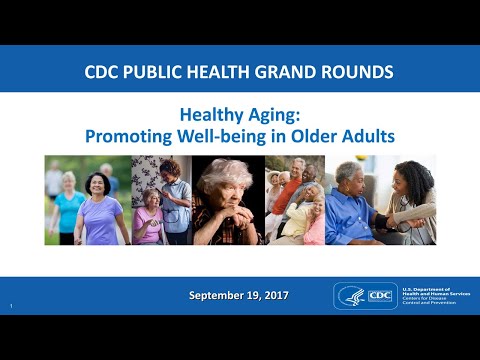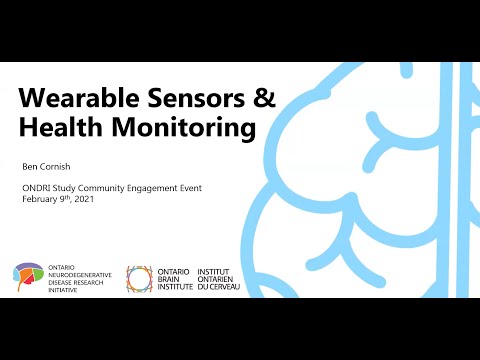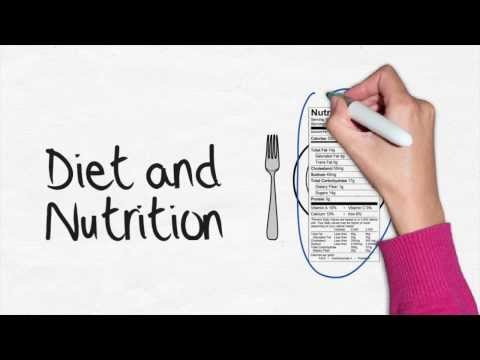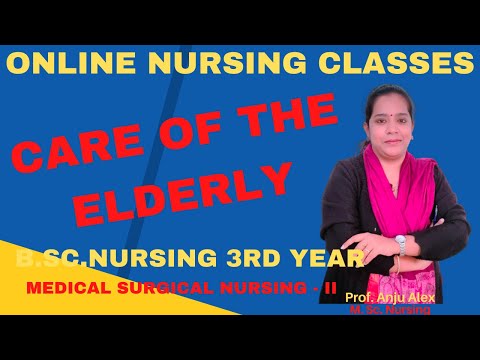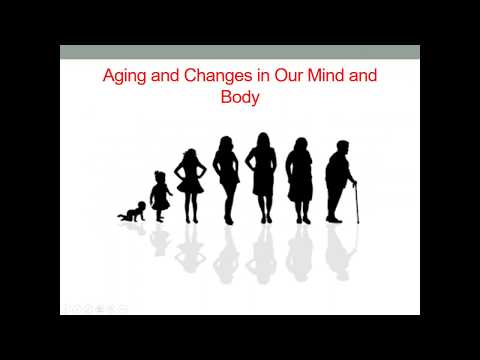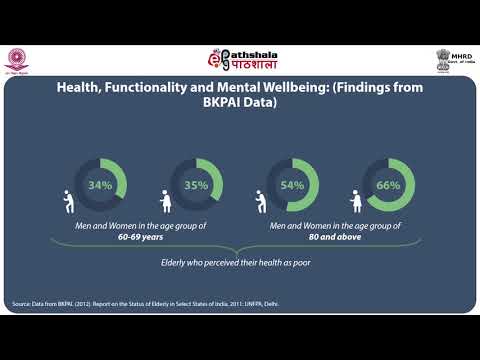Promoting Elderly Health Through Physical Activity
Contents
- The Importance of Physical Activity for the Elderly
- The Benefits of Physical Activity for the Elderly
- The Risks of Physical Inactivity for the Elderly
- The Types of Physical Activity That Are Beneficial for the Elderly
- How to Get Started With Physical Activity if You Are Elderly
- Tips for Staying Motivated to Be Physically Active as an Elderly Person
- How to Overcome Barriers to Physical Activity as an Elderly Person
- The Role of Family and Friends in Promoting Elderly Physical Activity
- The Role of Healthcare Professionals in Promoting Elderly Physical Activity
- 10.Conclusion – Promoting Elderly Health Through Physical Activity
There are many benefits to being physically active at any age, but it’s especially important for seniors. Regular exercise can help promote elderly health by reducing the risk of chronic diseases, improving mental health and cognitive function, and reducing the risk of falls.
Checkout this video:
The Importance of Physical Activity for the Elderly
There are many benefits of physical activity for the elderly, including reducing the risk of chronic diseases such as heart disease, stroke, and diabetes. Exercise can also help reduce the risk of falls and fractures, and improve mental health
However, older adults are often less active than they should be. According to the Centers for Disease Control and Prevention (CDC), only one in three adults aged 65 and over gets the recommended amount of physical activity each week.
There are many reasons why older adults may be less active. They may have chronic health conditions that make exercise difficult or painful, or they may be living in a retirement community where there are few opportunities for physical activity.
One way to encourage more physical activity among the elderly is through Community-Based Physical Activity Programs (CBPAPs). CBPAPs are designed to provide safe and easy ways for older adults to be physically active in their communities.
Examples of CBPAPs include walking groups, dance classes, tai chi classes, gardening clubs, and senior fitness programs. These programs can help older adults stay active and socialize with other people in their community.
If you’re an older adult, talk to your doctor about ways you can increase your physical activity level. And if you work with or care for older adults, consider starting or promoting a CBPAP in your community.
The Benefits of Physical Activity for the Elderly
The elderly population is one of the fastest growing demographic groups in the world. As people age, they become more susceptible to chronic diseases such as heart disease, stroke, cancer, and diabetes. According to the World Health Organization, chronic diseases are responsible for nearly two-thirds of all deaths worldwide.
Physical activity has been shown to be one of the most effective ways to prevent and manage chronic diseases. Regular physical activity can help reduce the risk of developing chronic diseases, and it can also help manage existing chronic conditions.
The benefits of physical activity for the elderly go beyond just reducing the risk of chronic diseases. Regular physical activity can also improve mental health cognitive function, and quality of life. It can also help reduce the risk of falls and fractures.
There are many ways that the elderly can get involved in physical activity. Walking is a great way to get started, and there are many ways to make walking more enjoyable and social. There are also many group fitness classes available specifically for seniors. Whatever your fitness level may be, there is an activity that is right for you.
If you are an elderly person looking to improve your health, talk to your doctor about ways you can get started with physical activity today.
The Risks of Physical Inactivity for the Elderly
The Center for Disease Control and Prevention (CDC) reports that one in four adults aged 65 and older suffer from a chronic disease. Furthermore, chronic diseases are responsible for seven of the ten leading causes of death in the United States with heart disease, cancer, and stroke accounting for over 50% of all deaths each year. According to the CDC, those aged 85 and older are the most likely to suffer from a chronic disease.
Physical inactivity is a key risk factor for developing chronic diseases. The CDC report that only around 20% of those aged 65 and older meet the recommended 150 minutes of moderate-intensity aerobic activity each week, with seniors living in rural areas at an even lower rate of activity (13%). Furthermore, nearly half of all seniors do not engage in any muscle-strengthening activities at least two days a week as recommended.
The lack of physical activity among seniors can be attributed to various reasons. For instance, many seniors live in retirement communities or nursing homes where they do not have easy access to transportation that would allow them to participate in physical activities outside of their immediate living area. Additionally, as people age they often experience more health problems that can make it difficult or painful to be physically active. Finally, some seniors simply do not see the need to be physically active as they age.
The consequences of physical inactivity are significant. According to the CDC, those who are physically inactive are more likely to develop heart disease, stroke, type 2 diabetes, various types of cancer, and high blood pressure. Furthermore, seniors who are physically inactive are also more likely to experience falls and fractures, suffer from depression and anxiety, and have a greater chance of cognitive decline.
There are many ways that seniors can become more physically active. The CDC recommends that seniors participate in moderate-intensity aerobic activities such as walking or swimming for at least 150 minutes each week. Additionally, seniors should engage in muscle-strengthening activities on at least two days each week. There are many ways to find group classes or other opportunities for physical activity; local community centers or online resources can be good places to start looking.
The Types of Physical Activity That Are Beneficial for the Elderly
The elderly population is often faced with a number of health problems that can lead to a decline in their physical and mental abilities. Physical activity is one of the most effective ways to combat these problems and promote overall health in the elderly. However, not all types of physical activity are equally beneficial. In order to maximize the health benefits of physical activity for the elderly, it is important to focus on activities that are specifically designed to improve their physical and mental wellbeing.
One type of physical activity that is particularly beneficial for the elderly is aerobic exercise. Aerobic exercise is any type of activity that raises your heart rate and gets your blood pumping. This type of exercise is ideal for promoting heart health, improving mental sharpness, and increasing Energy levels. Additionally, aerobic exercise has been shown to reduce the risk of falls in the elderly population, making it an essential part of any fall prevention program.
resistance training is another type of physical activity that offers a number of benefits for the elderly population. This type of exercise helps to build strong muscles and bones, which can help to reduce the risk of injuries from falls. Additionally, resistance training has been shown to improve mental health by reducing symptoms of anxiety and depression.
Finally, balance training is an important type of physical activity for the elderly population because it helps to improve balance and coordination. This type of exercise can help to reduce the risk of falls, as well as improve overall mobility. Balance training can be done through a variety of activities, such as Tai Chi or Yoga.
By including these three types of physical activity into their daily routine, the elderly can significantly improve their overall health and wellbeing.
How to Get Started With Physical Activity if You Are Elderly
If you are elderly, you may think that it is too late to start reaping the benefits of physical activity. However, research has shown that it is never too late to start being active! Below are some tips on how to get started with physical activity if you are elderly:
-Start slow: If you are not used to being physically active, it is important to ease your way into it. Try starting with 10 minutes of moderate-intensity activity every day. Once your body gets used to this, you can gradually increase the amount of time you are active each day.
-Choose an activity that you enjoy: It is important to choose an activity that you enjoy so that you will be more likely to stick with it. Some good options for older adults include walking, swimming, and Tai Chi.
-Get a buddy: It can be helpful to find a friend or family member who is also interested in being more physically active so that you can support each other in your journey.
If you follow these tips, you will be well on your way to improving your health through physical activity!
Tips for Staying Motivated to Be Physically Active as an Elderly Person
As an elderly person, it is important to stay physically active in order to maintain your health and wellbeing. However, it can sometimes be difficult to keep motivated. Here are a few tips that may help:
1. Set yourself realistic goals – Don’t try to do too much too soon. Start with small goals that you can realistically achieve, and then build up from there.
2. Find an activity that you enjoy – Choose an activity that you will actually enjoy doing, rather than something that you feel you should be doing.
3. Exercise with a friend – Find a friend or family member who is also interested in being physically active, and exercise together. This can help to make the activity more enjoyable and keep you both motivated.
4. Set aside time for physical activity – Make sure to schedule in time for physical activity, just as you would for any other important appointment. This will help to ensure that you actually do it!
5. Mix things up – Don’t do the same thing all the time or you may quickly become bored. Try different activities, locations, and intensities to keep things interesting.
How to Overcome Barriers to Physical Activity as an Elderly Person
As we age, it becomes more important than ever to maintain our physical health through regular activity. However, there are often many barriers that can prevent older adults from being active. These can include things like chronic health conditions, a sedentary lifestyle, lack of motivation, and limited resources.
There are ways to overcome these barriers, however. For example, older adults can:
– Talk to their doctor about ways to stay active despite health conditions.
– Find creative ways to be active, such as walking around the block or doing gentle yoga at home.
– Look for opportunities to be active with others, such as joining a senior exercise class or walking group.
– Set small goals and celebrate progress along the way.
By overcoming these barriers and incorporating physical activity into their daily lives, older adults can enjoy many benefits such as improved mental health increased energy levels, and better overall health.
The Role of Family and Friends in Promoting Elderly Physical Activity
The role of family and friends in promoting elderly physical activity is essential. As we age, we often become less active, and this can lead to a decline in our health. Family and friends can help by encouraging us to be more active and by providing support and motivation.
There are many ways that family and friends can promote elderly physical activity. They can help us to find activities that we enjoy, they can encourage us to be active with them, and they can give us advice and support when we need it.
Encouraging elderly physical activity doesn’t have to be difficult or time consuming. Even small changes, such as taking a brisk walk with a friend or going for a swim once a week, can make a big difference to our health. So, if you have an elderly friend or relative, think about how you can help them to be more active. It could make all the difference to their health and wellbeing.
The Role of Healthcare Professionals in Promoting Elderly Physical Activity
Healthcare professionals can play a key role in promoting physical activity among older adults. They can provide information and support to help older adults overcome barriers to physical activity, and they can refer older adults to community resources that can help them be more active.
Healthcare professionals can also advocate for policies and programs that support older adults’ physical activity, such as safe walking routes and access to recreational facilities. And they can encourage research on physical activity and aging, so that we can better understand how to promote healthy aging.
10.Conclusion – Promoting Elderly Health Through Physical Activity
Elderly people are often considered to be sedentary and at risk for declining health. However, research has shown that physical activity can help promote elder health. There are many ways to encourage the elderly population to be more active, including developing community programs, increasing access to facilities and equipment, and providing education and training. By promoting physical activity among the elderly, we can help improve their overall health and wellbeing.

